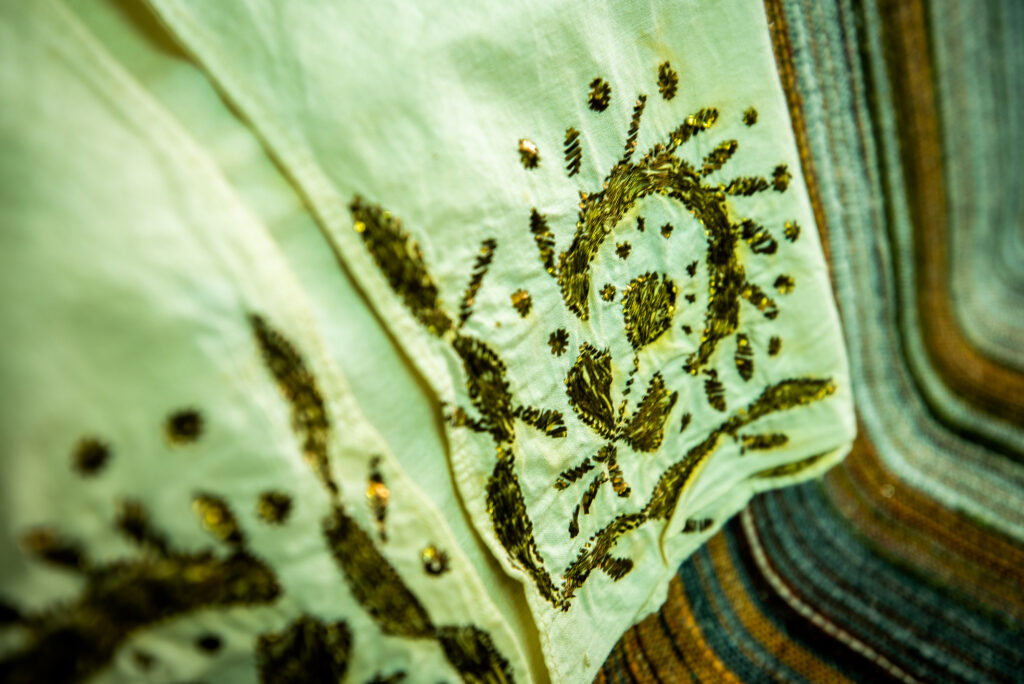
Seventy-six years later, the girls’ dowry was returned to their living descendants, fulfilling the promise made by the Yalcin family to their neighbours. Ramazan Yalcin used to say, ‘A dowry left behind should never be given away. A trousseau laden with sighs of grief cannot bring happiness to the girl who receives it.’ Ramazan never forgot his childhood friend Safie, as he called Sofia Minoglou.
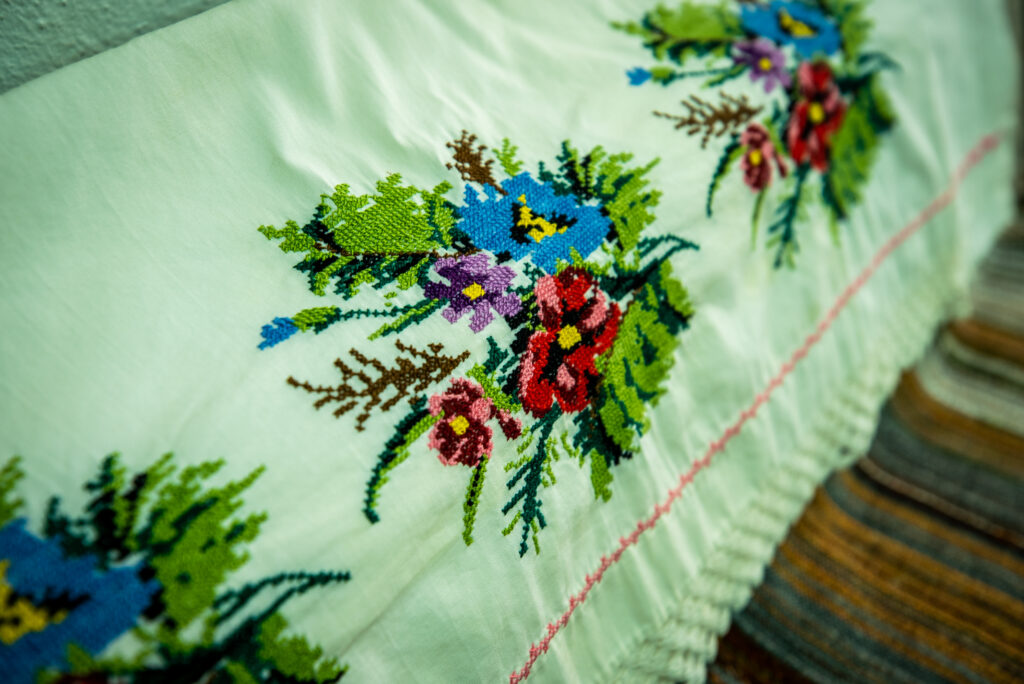
After the Turkish coup of September 1980, Kemal Yalcin, now a professor, was forced to become a refugee himself. He found himself in Germany and only managed to reunite with his parents twelve years later. He asked his father to tell him the story of the Minoglou family again and it was his father who encouraged him to write about it and to look for the family in Greece in order to deliver the trousseau which was still in a chest in the Yalcin home back in Honaz.
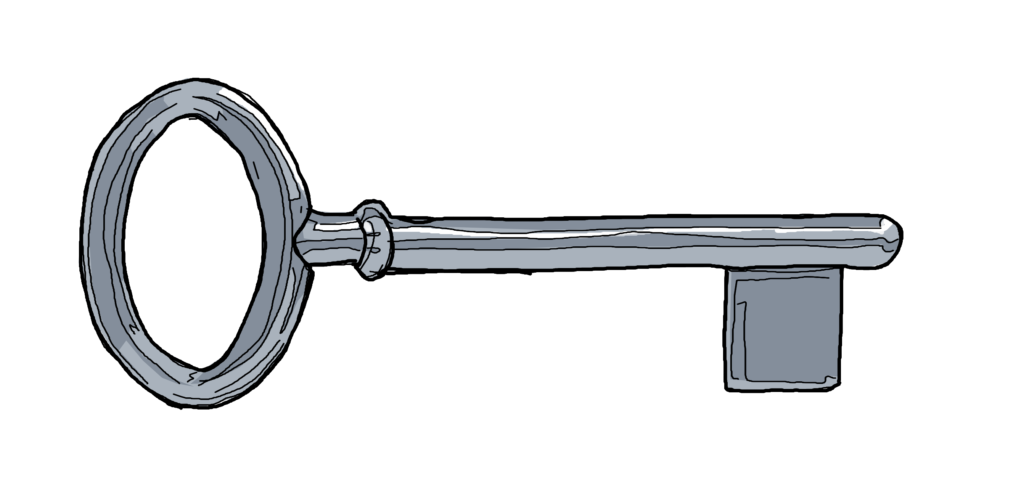
Manolis Mylonas, the son of Asia Minor refugees, was born and raised in Chania during the interwar period. His family lived in Splantzia, a major refugee neighbourhood in the heart of the city. They lived in a building with other refugees, one family per room.
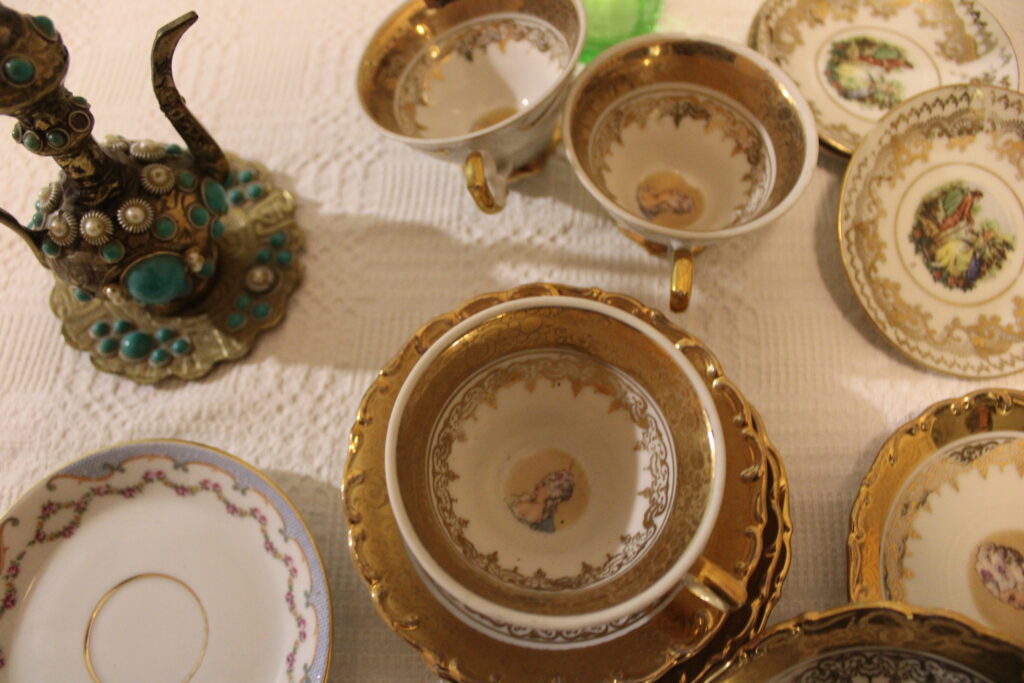
Virginia Spanoudi was born in Constantinople in 1914. Her mother, Kyriaki, worked in the house of a wealthy Greek in Peran (Beyoğlu) who helped with her daughter’s education. Virginia spoke English and French and found work as a seamstress.
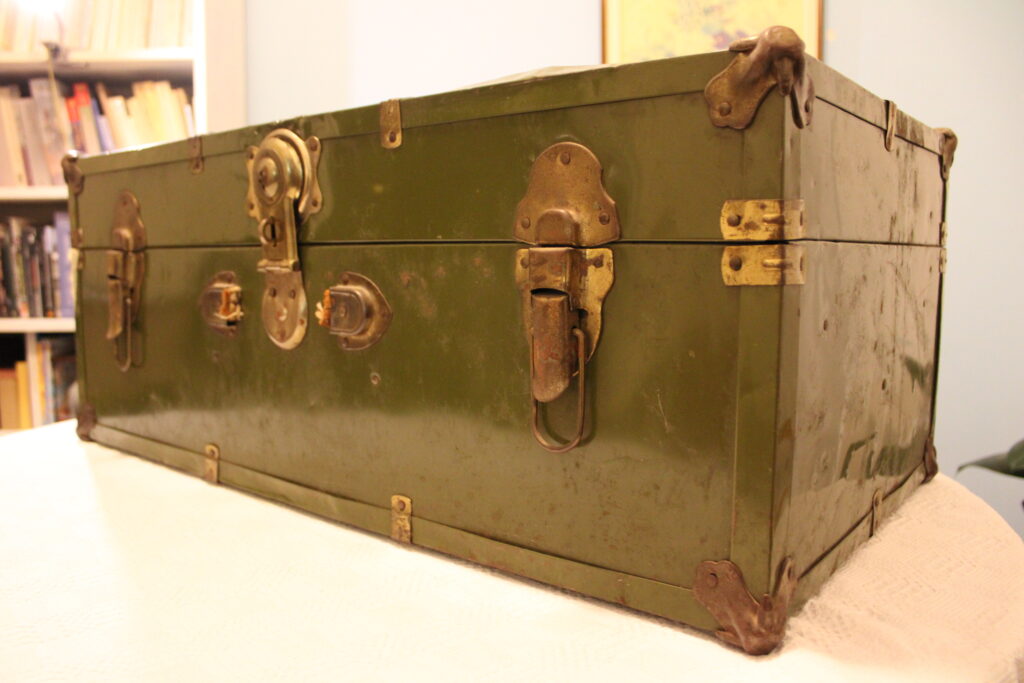
From Constantinople, Virginia Spanoudi brought whatever could fit in a green chest, including personal items, clothing, jewellery, some household items and furniture.
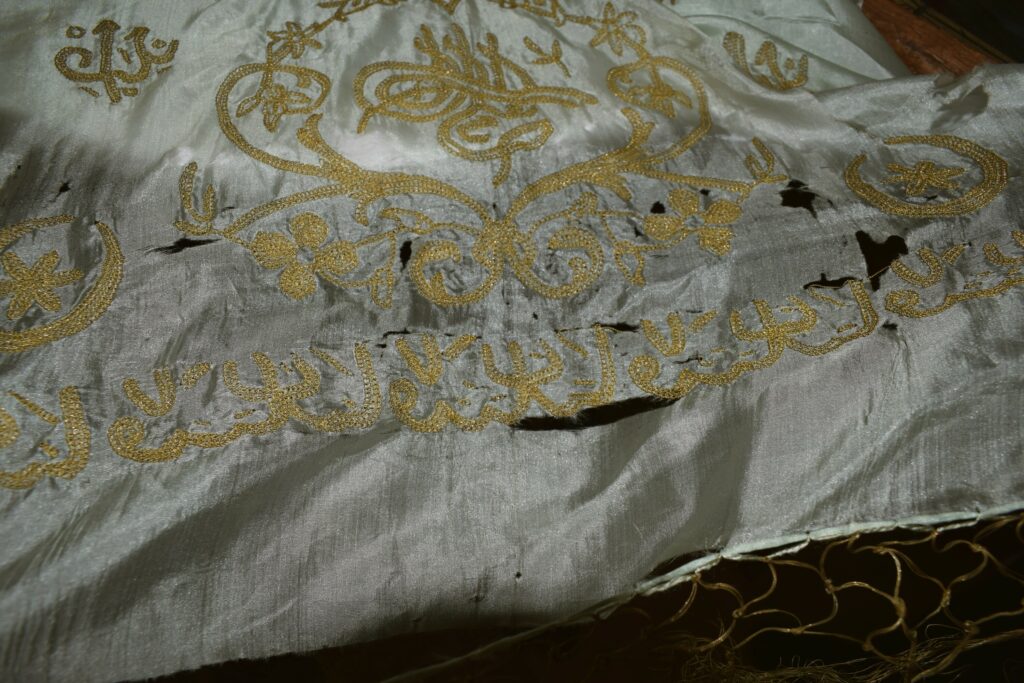
This Ottoman embroidery is not just a memento of the history of Asia Minor refugees, but also highlights the co-existence of national and religious groups on the eastern coast of the Aegean before the population exchange.
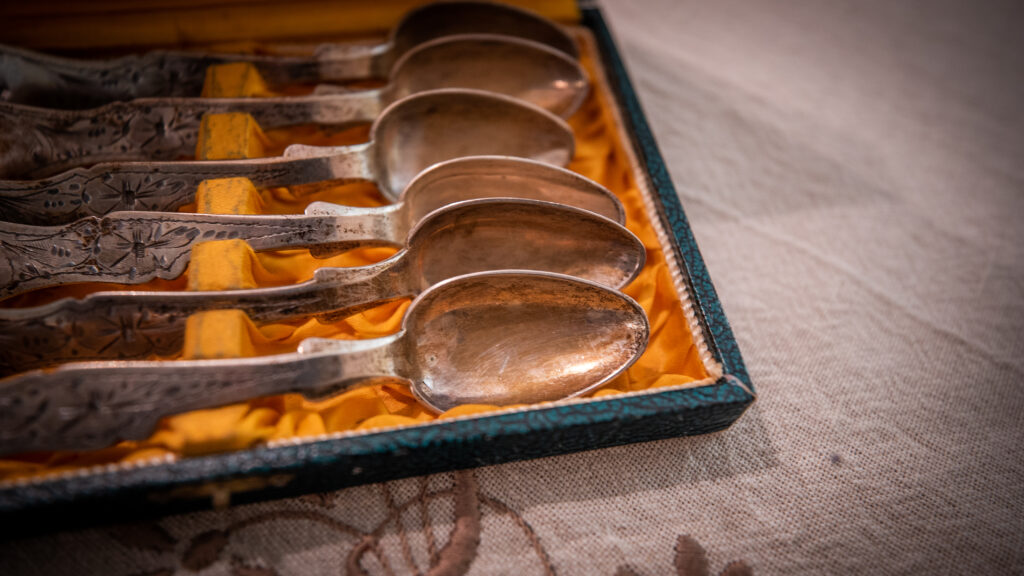
Anastasia Ktypiadou met Ioakeim Prokopoglou at her father’s, Ioannis, grocery store and soon their acquaintance became a budding romance. Sadly, the couple was temporarily driven apart by the end of the Greco-Turkish war and the ensuing population exchange agreement, with Anastasia remaining in Constantinople, as her family was exempt from the population exchange, while Ioakeim
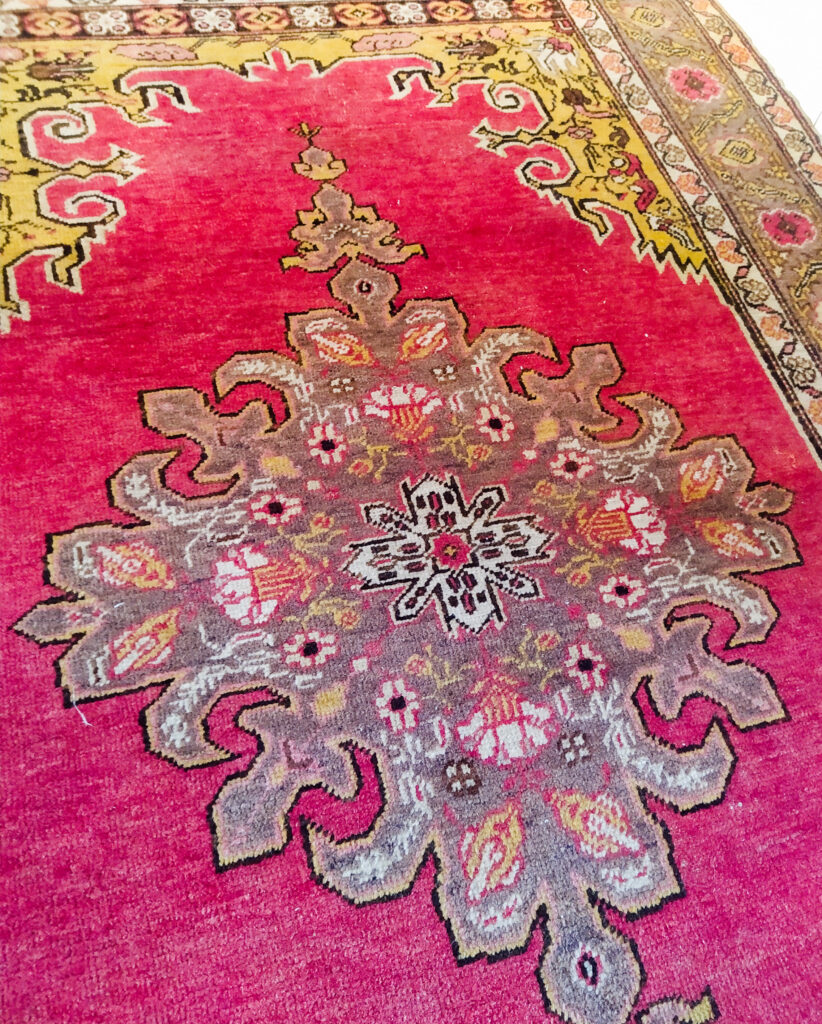
Grandma Despoina’s handmade carpet was one of the few objects she had brought with her from Sinasos and is still in use today, in the living room of her great-granddaughter, Anastasia Sarantari. Its vibrant colours and bold shapes remain impressive even after all these years.
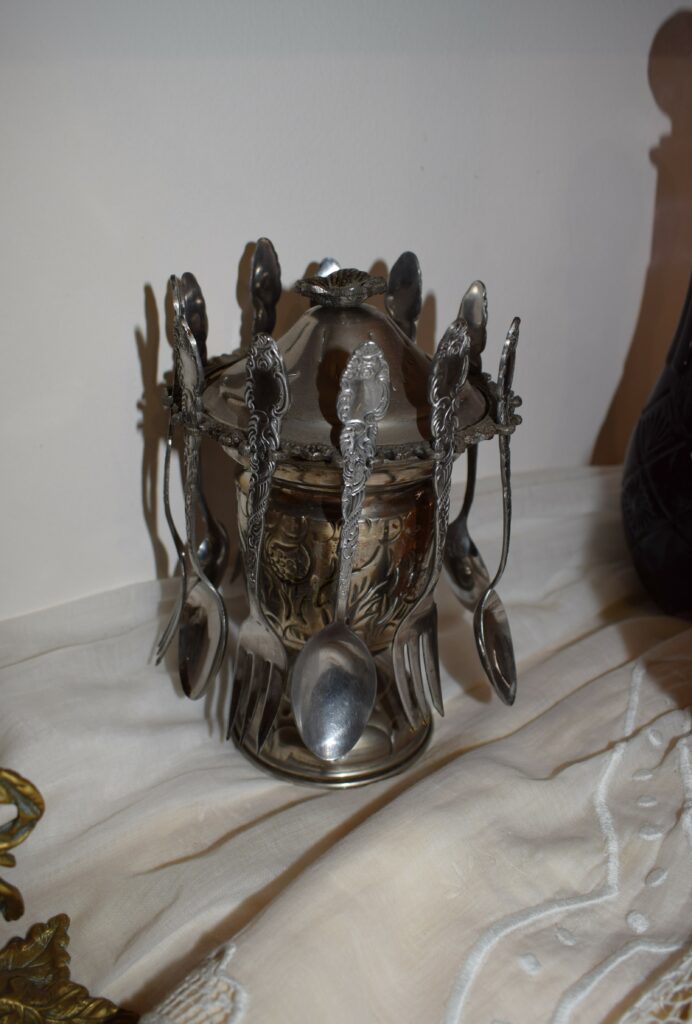
The most distinctive household items kept by the ‘Agios Polykarpos’ Brotherhood of Asia Minor Greeks of Chania in the ‘House of Asia Minor Greeks’ are probably a cutlery set and a pair of door handles.
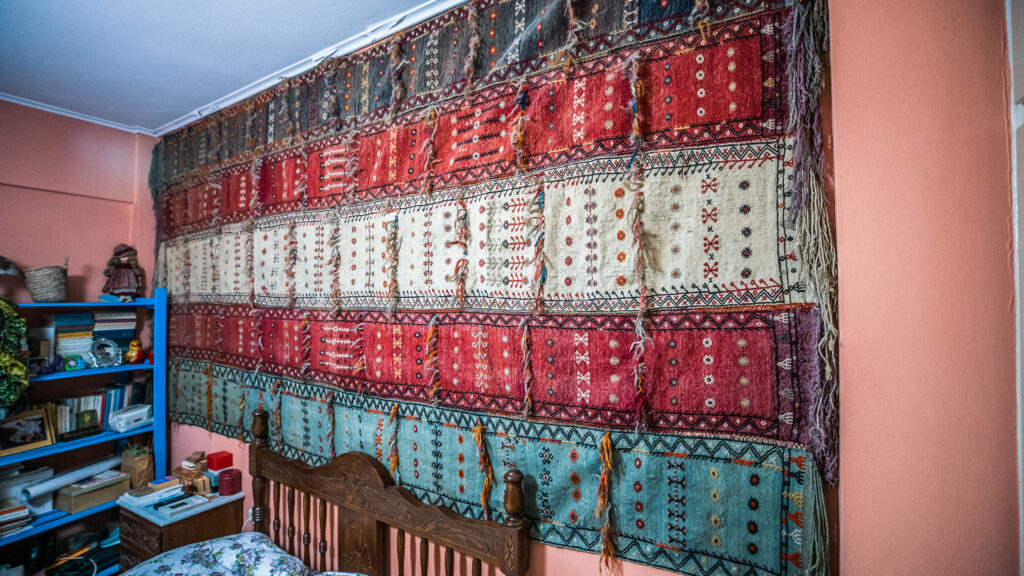
‘Kiz kilim. Bought in Thessaloniki in 1924 from an elderly Asia Minor refugee. Part of a dowry. It was the custom back then for all the friends of the bride to weave a kilim to which each friend would add some adornment as a memento; a piece of her dress, a lock of her hair, a feather from her favourite bird, a lucky charm.’ This short note handwritten by Chrysiida (Lou) Pierrakou (née Vatikioti) records the origins of this handmade rug and the starting point of its long journey.









